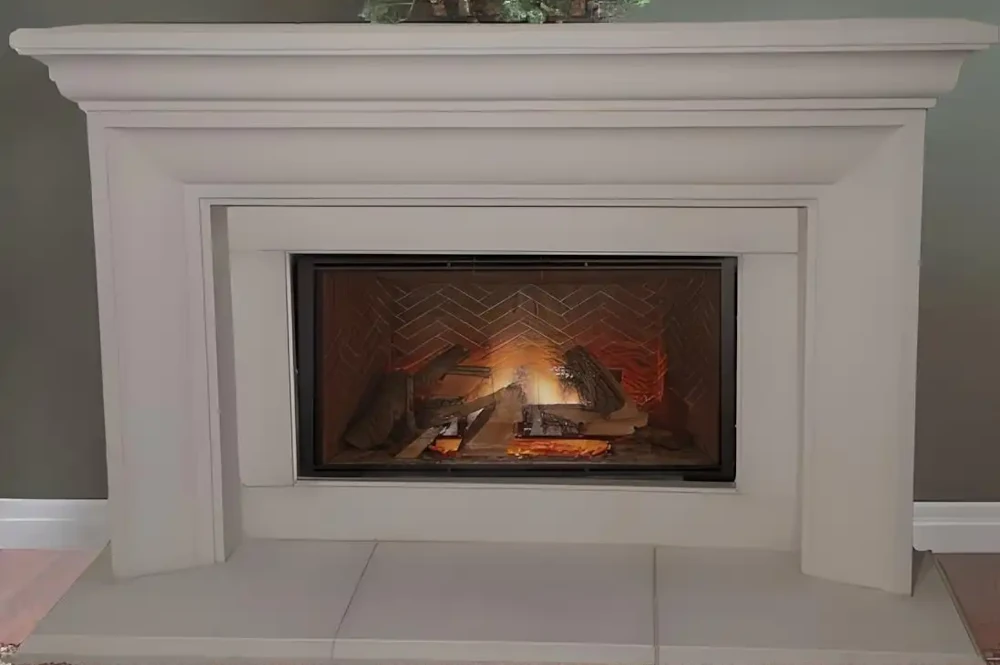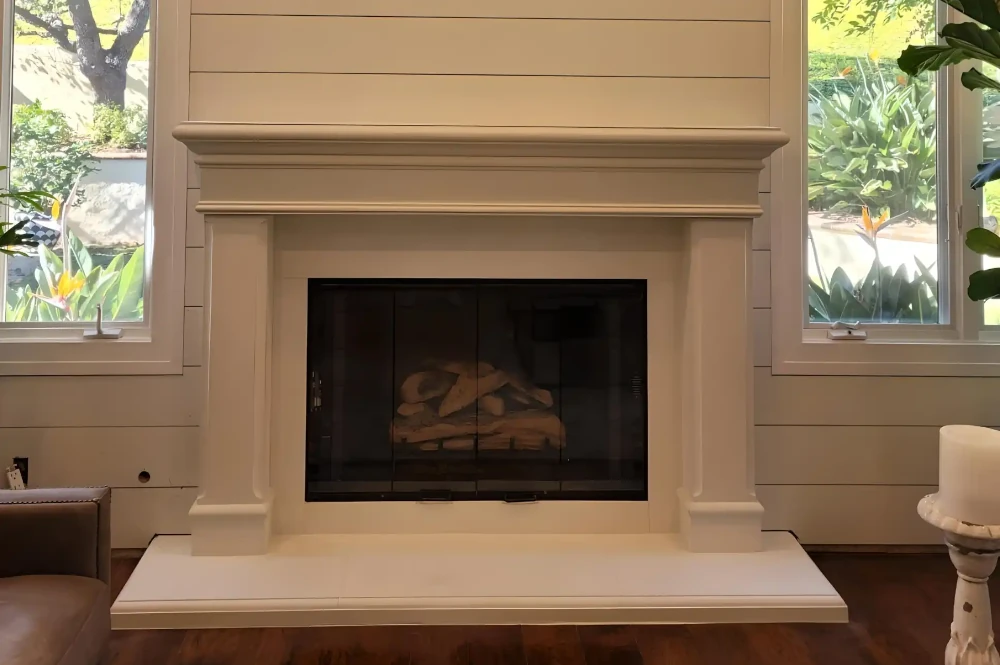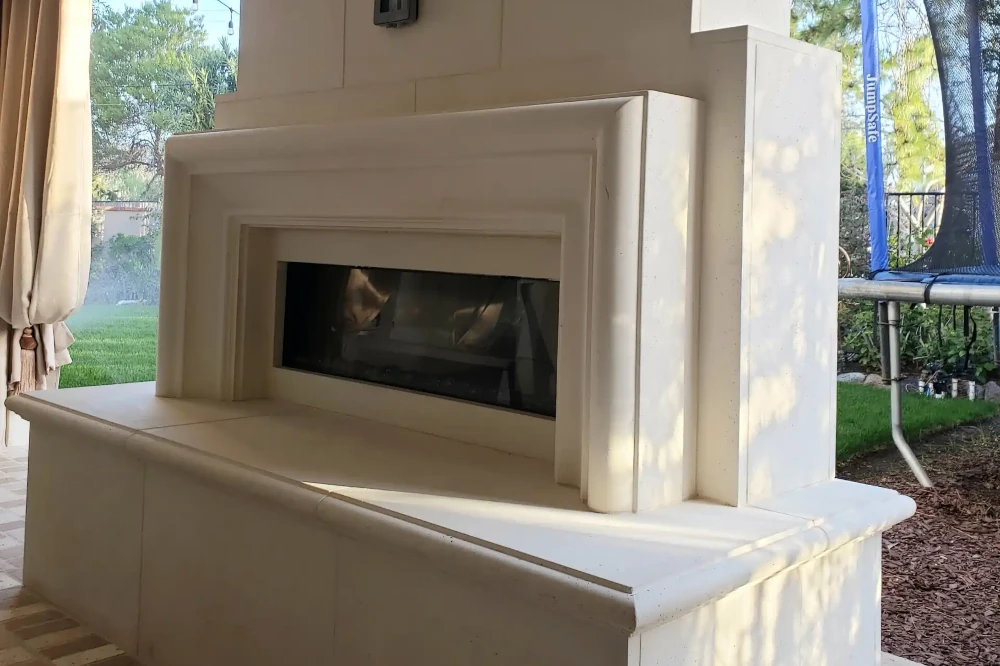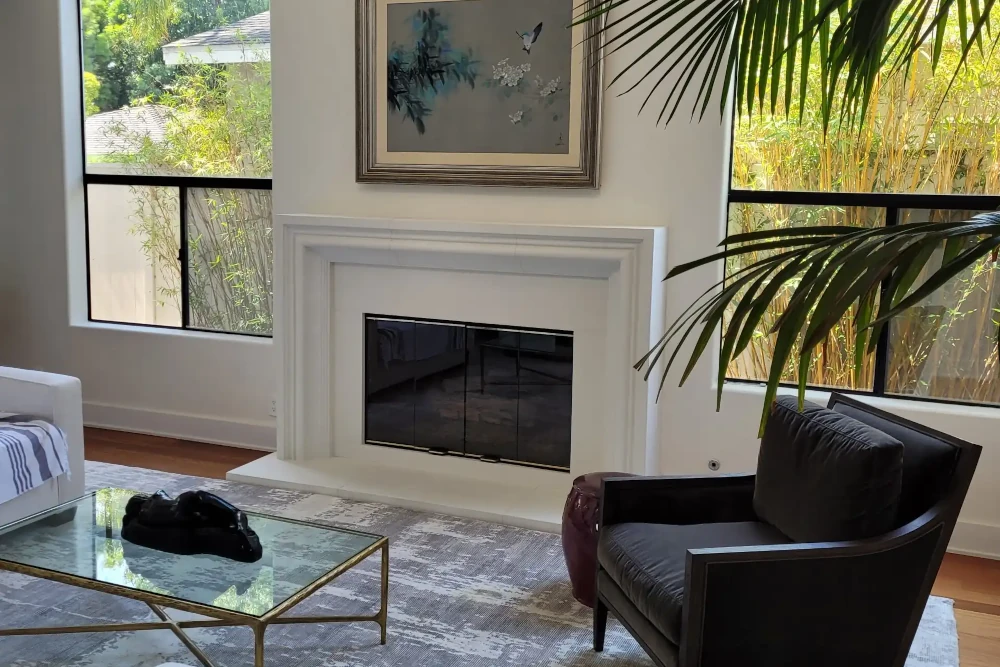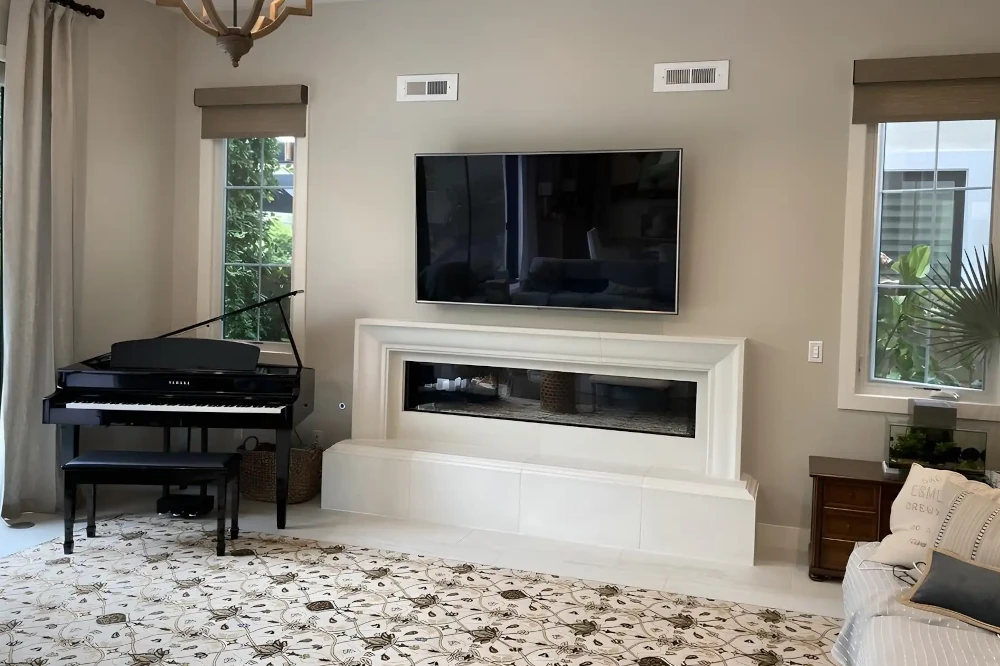Choosing the right material for a fireplace mantel is a crucial decision that impacts both the aesthetic appeal and functionality of a home. Among the various options available, cast stone is a popular choice due to its versatility and durability. However, it’s essential to compare cast stone to other materials like wood, marble, granite, and metal to make an informed decision. This article provides an in-depth comparison of cast stone and other fireplace mantel materials, highlighting their pros and cons.
Cast Stone
Cast stone is a type of concrete product that replicates the look and feel of natural stone. It is made from a mixture of fine and coarse aggregates, Portland cement, and mineral oxide colorants, which are molded and cured to create durable and aesthetically pleasing architectural elements.
Pros:
- Aesthetic Versatility: Cast stone can be molded into various shapes, sizes, and textures, mimicking the appearance of natural stone such as limestone, granite, or marble. This flexibility allows for a wide range of design options.
- Durability: Cast stone is highly durable and resistant to chipping, cracking, and weathering, making it suitable for both indoor and outdoor applications.
- Cost-Effective: Compared to natural stone, cast stone is more affordable while offering a similar look and feel. It provides a high-end appearance at a lower cost.
- Customization: With cast stone, homeowners can achieve custom designs that match their specific preferences and architectural style.
- Low Maintenance: Cast stone requires minimal maintenance. Regular cleaning with mild soap and water is typically sufficient to keep it looking pristine.
Cons:
- Weight: Cast stone is relatively heavy, which can pose challenges during installation and may require additional structural support.
- Color Fading: Over time, exposure to sunlight can cause some color fading, although this can be mitigated with proper sealing and maintenance.
Wood
Wood has been a traditional material for fireplace mantels for centuries. It offers a warm, natural look that complements various interior design styles, from rustic to modern.
Pros:
- Warmth and Beauty: Wood adds warmth and natural beauty to a room, creating a cozy and inviting atmosphere.
- Variety: There is a wide variety of wood types (oak, cherry, maple, pine, etc.) and finishes available, allowing for extensive customization.
- Easy to Work With: Wood is relatively easy to cut, shape, and finish, making it a versatile material for custom designs and intricate details.
- Lighter Weight: Compared to stone materials, wood is lighter and easier to install.
Cons:
- Flammability: Wood is a flammable material, which poses a fire risk if proper precautions are not taken. It must be adequately treated and installed at a safe distance from the firebox.
- Maintenance: Wood mantels require regular maintenance, including dusting, polishing, and potential refinishing to prevent damage from heat, moisture, and wear.
- Susceptibility to Damage: Wood can be prone to scratches, dents, and warping over time, especially in high-humidity environments.
Marble
Marble is a luxurious natural stone known for its elegance and timeless beauty. It is often associated with classical and high-end interior designs.
Pros:
- Aesthetic Appeal: Marble offers a unique and luxurious appearance with its natural veining and rich color variations. It adds a sense of grandeur and sophistication to any space.
- Heat Resistance: Marble is highly heat resistant, making it an excellent choice for fireplace surrounds and mantels.
- Durability: With proper care, marble can last for generations, maintaining its beauty and integrity.
Cons:
- High Cost: Marble is one of the more expensive materials for fireplace mantels, which can be a significant investment.
- Maintenance: Marble requires regular maintenance, including sealing to protect against staining and etching from acidic substances.
- Weight: Like cast stone, marble is heavy and may require additional structural support during installation.
Granite
Granite is another natural stone that is prized for its durability and distinctive appearance. It is commonly used in both contemporary and traditional fireplace designs.
Pros:
- Durability: Granite is extremely durable and resistant to scratching, chipping, and heat, making it a long-lasting choice for fireplace mantels.
- Variety of Colors: Granite comes in a wide range of colors and patterns, providing plenty of design options.
- Low Maintenance: Granite is relatively low maintenance compared to other natural stones. Regular cleaning and periodic sealing are typically sufficient to maintain its appearance.
Cons:
- Cost: Granite is expensive, although it is generally less costly than marble.
- Weight: Granite is very heavy, requiring professional installation and potentially additional structural support.
- Seams: Larger granite installations may require seams, which can be visible and affect the overall aesthetic.
Metal
Metal fireplace mantels, made from materials such as stainless steel, wrought iron, or bronze, offer a modern and industrial look. They are increasingly popular in contemporary and minimalist interior designs.
Pros:
- Modern Aesthetic: Metal mantels provide a sleek and modern appearance, ideal for contemporary interiors.
- Durability: Metals are highly durable and resistant to heat, warping, and cracking.
- Low Maintenance: Metal mantels require minimal maintenance and are easy to clean with standard household cleaners.
- Versatility: Metals can be fabricated into various shapes and designs, offering a wide range of customization options.
Cons:
- Cold Appearance: Metal can give a cold and industrial look, which may not be suitable for all interior styles.
- Cost: High-quality metal mantels, especially those made from custom or artisan materials, can be expensive.
- Susceptibility to Rust: Certain metals, if not properly treated or maintained, can be susceptible to rust and corrosion, particularly in humid environments.
Conclusion
Choosing the right material for a fireplace mantel involves balancing aesthetic preferences, functional requirements, and budget considerations. Each material—cast stone, wood, marble, granite, and metal—offers unique advantages and potential drawbacks.
- Cast Stone: Offers the look of natural stone at a lower cost, with excellent durability and customization options, though it can be heavy and may fade over time.
- Wood: Provides warmth and natural beauty with easy customization, but requires regular maintenance and presents a fire risk.
- Marble: Exudes luxury and elegance with excellent heat resistance, but comes with a high cost and maintenance requirements.
- Granite: Combines durability with a variety of colors, but is expensive and heavy.
- Metal: Delivers a modern, durable option with low maintenance needs, though it can appear cold and may rust if not properly maintained.
Ultimately, the best choice for your fireplace mantel will depend on your specific needs, preferences, and the overall design of your home. By carefully weighing the pros and cons of each material, you can select a mantel that enhances both the functionality and aesthetic appeal of your living space.
If you’re looking for a high-quality cast stone for your house, go to Studio Design Works – Cast Stone Products. You can reach the store by phone at (949) 627-5926 or through this form.
When it comes to home construction and interior design, choosing the right materials can make a significant difference in the overall aesthetic, durability, and cost of a project. Stone has long been a favored material […]
Fireplaces have long been the heart of the home, providing warmth and a gathering place for families and friends. Over the years, the design of fireplaces, particularly the mantels, has evolved significantly. Among the various […]
Modern cast stone fireplaces have become a popular choice for homeowners looking to add a touch of elegance, warmth, and architectural interest to their living spaces. Cast stone, a highly versatile material that mimics the […]
Modern cast stone has emerged as a popular choice in contemporary architecture and interior design, offering a blend of durability, versatility, and aesthetic appeal. Cast stone, a refined architectural concrete product, can mimic natural stone’s […]

